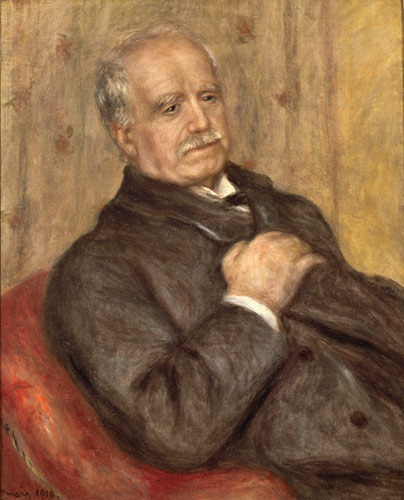Without the Parisian dealer Paul Durand-Ruel, the profoundly beautiful and revolutionary art of the Impressionists might have been forgotten in the annals of history. Thankfully, books were written differently, and the story of Impressionism’s rise to fame is illuminated through a one-of-a-kind exhibition.

It’s hard to imagine that at one time painters such as Claude Monet, Edgar Degas, and Pierre-Auguste Renoir were part of a group of unknown artists unappreciated by the Parisian bourgeoisie. “Discovering the Impressionists: Paul Durand-Ruel and the New Painting” is currently showing at the Philadelphia Museum of Art and explores the period between 1865 and 1905, when the visionary Durand-Ruel made a decisive but risky investment in this group of painters.

Pierre-Auguste Renoir, “Portrait of Paul Durand-Ruel,” 1910, oil on canvas, digital image courtesy
Philadelphia Museum of Art.
The exhibition begins its story with Durand-Ruel’s acquisition of his family’s successful art gallery. His preference for innovative artists was clear from his early investment in Eugène Delacroix, Gustave Courbet, and Jean-François Millet — each of whom have paintings featured in the exhibition. The narrative continues with Durand-Ruel’s discovery of the Impressionists, a group of artists that evoked a changing, modernizing world. He financed several exhibitions of Impressionist work before promoting their work in the United States. The last gallery of the exhibition features Durand-Ruel’s personal collection of Impressionist paintings and even includes a marble sculpture by Auguste Rodin.

“Discovering the Impressionists: Paul Durand-Ruel and the New Painting” opened on June 24 and will be on view until September 13. The Philadelphia Museum of Art is the exhibition’s only U.S. venue.
To learn more, visit Philadelphia Museum of Art.
This article was featured in Fine Art Today, a weekly e-newsletter from Fine Art Connoisseur magazine. To start receiving Fine Art Today for free, click here.








